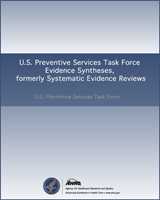From: Appendix A, Additional Background and Contextual Questions

NCBI Bookshelf. A service of the National Library of Medicine, National Institutes of Health.
| Category Classification | Category Descriptor | Category | Findings | Management |
|---|---|---|---|---|
| Incomplete | 0 | Part or all of lungs cannot be evaluated; prior chest CT examination(s) being located for comparison | Additional lung cancer screening CT images and/or comparison to prior chest CT examinations is needed | |
| Negative | No nodules and definitely benign nodules | 1 | No lung nodules; nodule(s) with specific calcifications: complete, central, popcorn, concentric rings, and fat- containing nodules | Continue annual screening with LDCT in 12 months |
| Benign appearance or behavior | Nodules with a very low likelihood of becoming a clinically active cancer due to size or lack of growth | 2 | Perifissural nodule(s)* <10 mm (524 mm3) Solid nodule(s): <6 mm (<113 mm3), new <4 mm (<34 mm3) Part solid nodule(s): <6 mm total diameter (<113 mm3) on baseline screening Nonsolid nodule(s) (GGN): <30 mm (<14,137 mm3) OR ≥30 mm (≥14,137 mm3) and unchanged or slowly growing Category 3 or 4 nodules unchanged for ≥3 months | Continue annual screening with LDCT in 12 months |
| Probably benign | Probably benign finding(s): short-term followup suggested; includes nodules with a low likelihood of becoming a clinically active cancer | 3 | Solid nodule(s): ≥6 to <8 mm (≥113 to <268 mm3) at baseline OR new 4 mm to <6 mm (34 to <113 mm3) Part solid nodule(s): ≥6 mm total diameter (≥113 mm3) with solid component <6 mm (<113 mm3) OR new <6 mm total diameter (<113 mm3) Nonsolid nodule(s): (GGN) ≥30 mm (≥14,137 mm3) on baseline CT or new | 6-month LDCT |
| Suspicious | Findings for which additional diagnostic testing is recommended | 4A | Solid nodule(s): ≥8 to <15 mm at baseline (≥268 to <1,767 mm3) OR growing <8 mm (<268 mm3) OR new 6 to <8 mm (113 to <268 mm3) Part solid nodule(s): ≥6 mm (≥113 mm3) with solid component ≥6 mm to <8 mm (≥113 to <268 mm3) OR with a new or growing <4 mm (<34 mm3) solid component Endobronchial nodule | 3-month LDCT; PET/CT may be used when there is a ≥8 mm (≥268 mm3) solid component |
| Very suspicious | Findings for which additional diagnostic testing and/or tissue sampling is recommended | 4B | Solid nodule(s) ≥15 mm (≥1,767 mm3) OR new and growing and ≥8 mm (≥268 mm3) Part solid nodule(s) with a solid component ≥8 mm (≥268 mm3) OR a new or growing ≥4 mm (≥34 mm3) solid component | Chest CT with or without contrast, PET/CT and/or tissue sampling depending on the *probability of malignancy and comorbidities. PET/CT may be used when there is a ≥8 mm (≥268 mm3) solid component. For new large nodules that develop on an annual repeat screening CT, a 1- month LDCT may be recommended to address potentially infectious or inflammatory conditions |
| 4X | Category 3 or 4 nodules with additional features or imaging findings that increase the suspicion of malignancy† | |||
| Other | Clinically significant or potentially clinically significant findings (nonlung cancer) | S | Modifier: may add on to category 0‐4 coding | As appropriate to the specific finding |
Adapted from Lung‐RADS Version 1.1 Assessment Categories Release date: 2019
Solid nodules with smooth margins, an oval, lentiform or triangular shape, and maximum diameter less than 10 mm or 524 mm3 (perifissural nodules) should be classified as category 2.
These include, for example, spiculation, GGN that doubles in size in 1 year, and enlarged lymph nodes.
Abbreviations: CT=computed tomography; GGN=ground glass nodule; LDCT=low-dose computed tomography; NA=not applicable; PET=positron emission tomography.
Some notes on use of Lung‐RADS Version 1.1:
Nodule mean diameter is calculated by measuring both the long and short axes to one decimal point and reporting mean nodule diameter to one decimal point.
Size thresholds: Apply to nodules at first detection, and that grow and reach a higher size category.
Growth is defined as an increase in size of >1.5 mm (>2 mm3).
Exam category: Each exam should be coded 0‐4 based on the nodule(s) with the highest degree of suspicion.
From: Appendix A, Additional Background and Contextual Questions

NCBI Bookshelf. A service of the National Library of Medicine, National Institutes of Health.